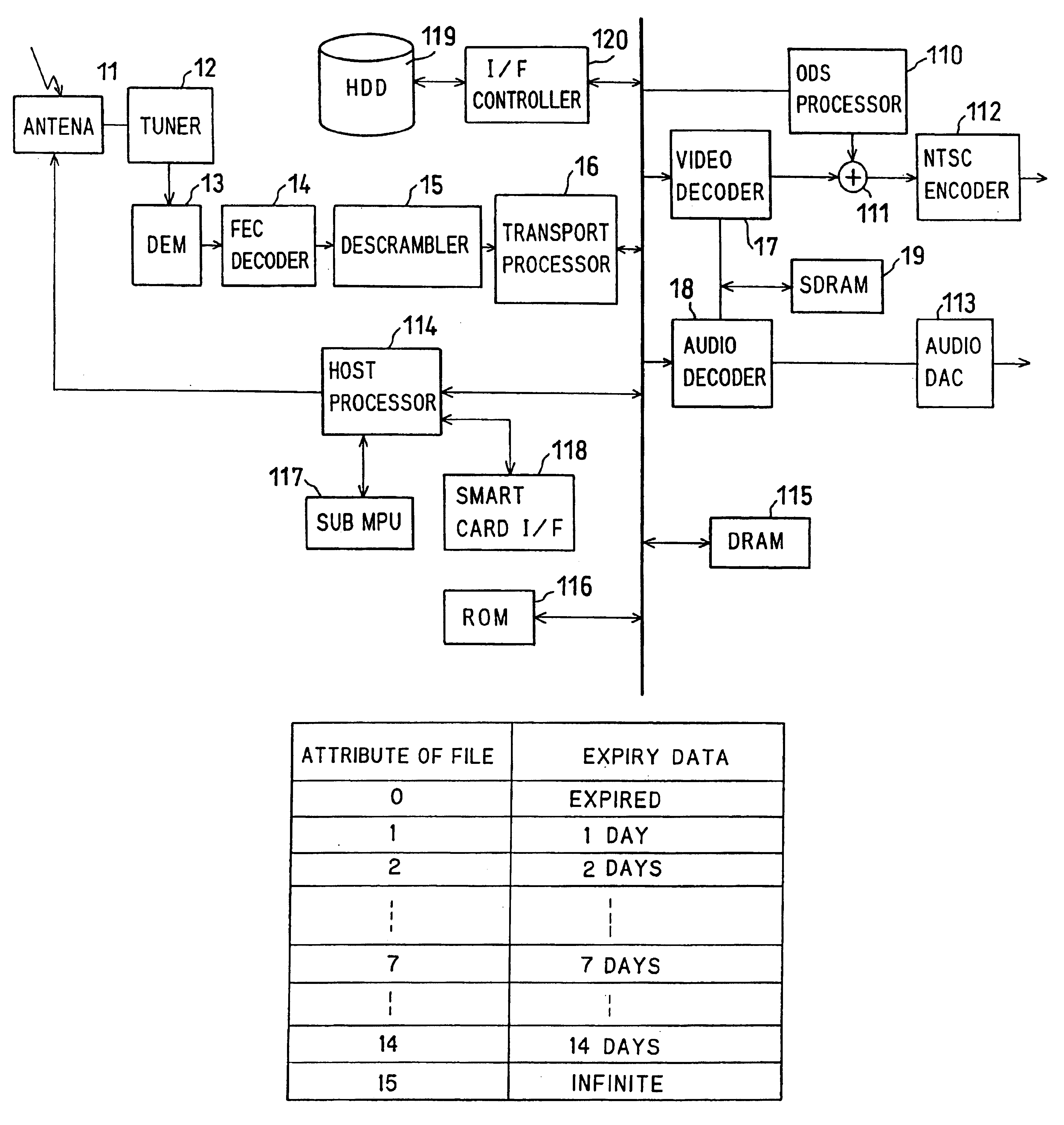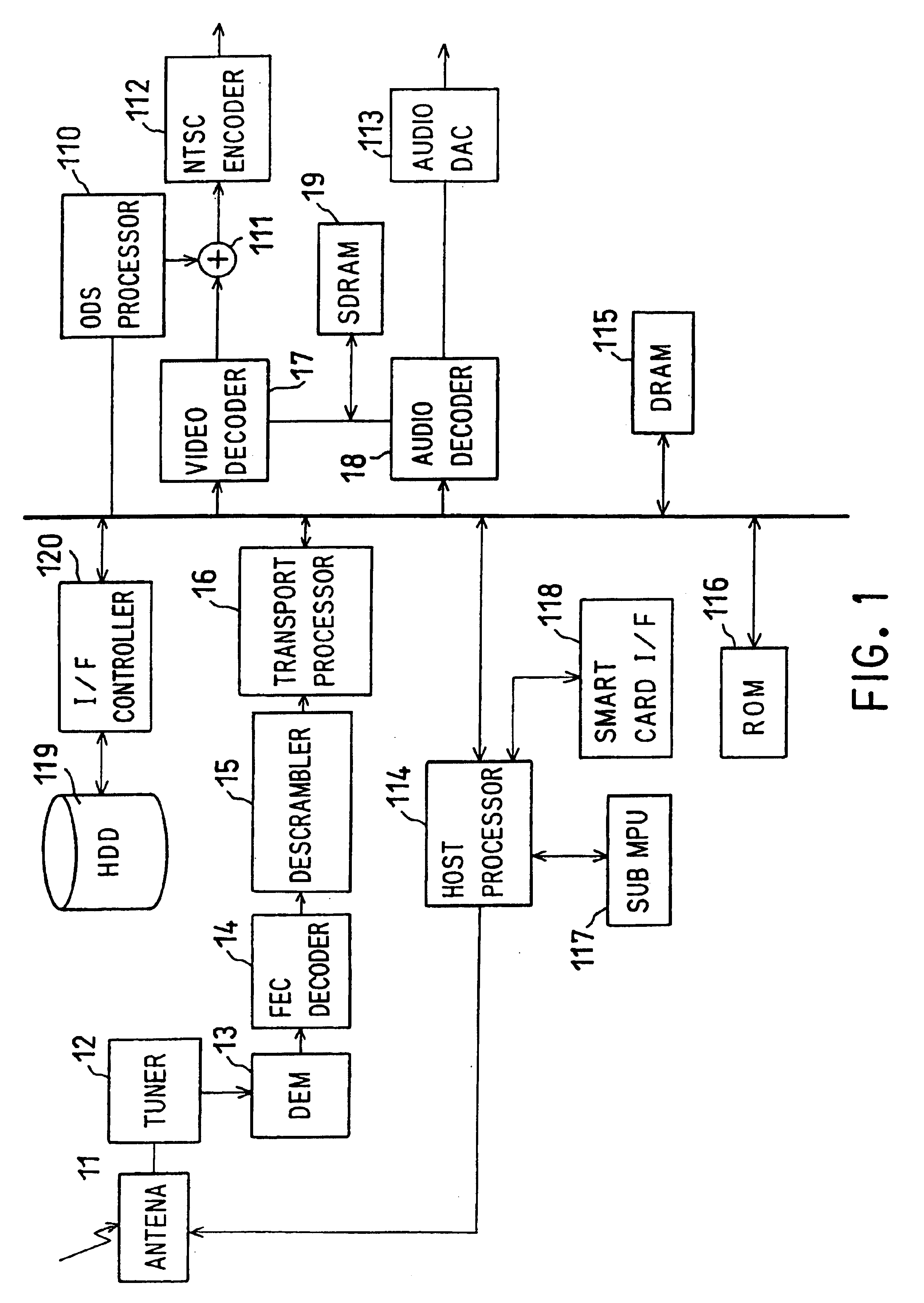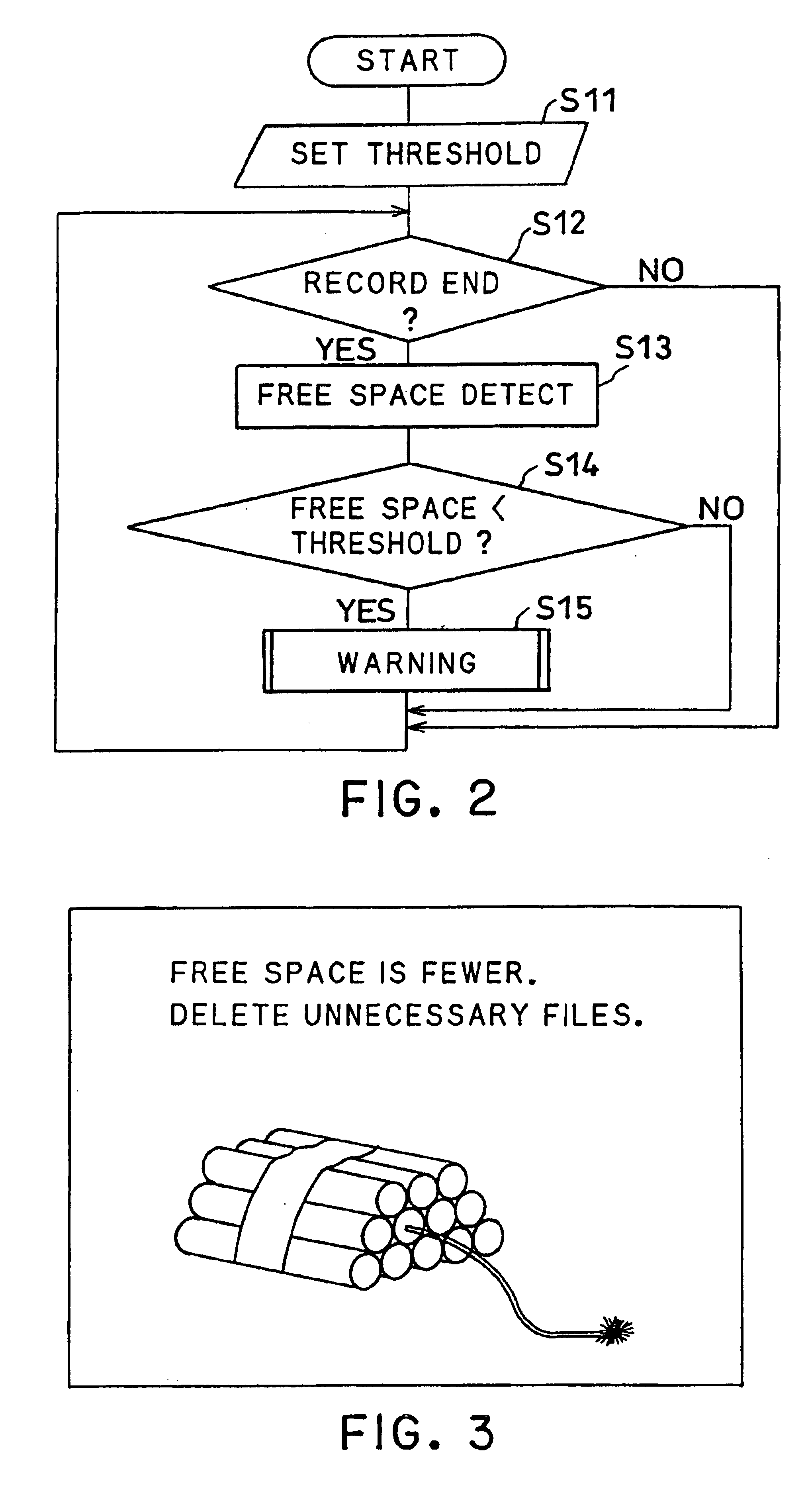Broadcasting receiver for receiving and regenerating records of digital broadcasting
a digital broadcasting and receiver technology, applied in the field of broadcasting receivers, can solve the problems of reducing usable capacity, deleting required files, and unrecordable content, and achieve the effect of ensuring free disk space now efficiently
- Summary
- Abstract
- Description
- Claims
- Application Information
AI Technical Summary
Benefits of technology
Problems solved by technology
Method used
Image
Examples
embodiment 1
(Embodiment 1)
In this embodiment, when free disk space on file system of HDD 119 decreases, alarm display is performed. Transaction in case IRD investigates free disk space and carries out alarm display at the time of record end of certain program is described with reference to flow chart shown in FIG. 2.
In process (S11) of FIG. 2, threshold of free disk space of file system on HDD 119 is set up beforehand first. This threshold means critical free disk space of HDD 119.
Specifically, this value is previously set, for example, to 80% of HDD. By control from host processor 114, user is asked about whether 80% is sufficient on screen of TV receiver connected to this IRD through OSD processor 110, or how much it will be made if it is vary, and it urges to key input by remote controller, for example.
In process (S12), when host processor 114 of IRD detects record termination of program specified by user, host processor 114 investigates free disk space of file system of HDD 119 at the time,...
embodiment 2
(Embodiment 2)
This embodiment is an example which shows user the file which should be carried out, deletion or transmission among record files on HDD, in order to secure sufficient free disk space. IRD holds count of playback as an attribute information on recorded file, and always have updated and the count of playback as an attribute information is used.
Flow of this transaction is shown in FIG. 4. In FIG. 4, minimum count (NMP) of playback is beforehand set up in process (S21), and maximum number (NMF) of files which can be displayed is set up, in process (S22). As default value, for example, the minimum count (NMP) is set to 3, and the maximum number (NMF) is set to 5.
By control from host processor 114, through OSD processor 110, the count of playback (NMP), and the number of display files (NMF) are inquired of user on screen of TV receiver. If user expects different (NMP) or (NMF), user inputs the value to expect, from remote controller. Host processor 114 of IRD asks user wheth...
embodiment 3
(Embodiment 3)
this embodiment is an example to periodically delete deletable files on HDD 119 in order to secure sufficient free disk space, without needing user's effort. Host processor 114 of IRD memorizes and updates expiry date (ED) of file as an attribute information on file recorded. This embodiment describes case where deletion process is carried out for every constant time using this expiry date.
Expiry date of file is controlled, for example, per days using 4 bits as shown in FIG. 6.
When record file is created newly, seven days will be given automatically as a default value. And while date passes, decrement of this value is carried out. If expiry date (ED) of file becomes zero, host processor 114 deletes the applicable file as expiration. Expiry date of file can be changed by user.
For example, when host processor 114 controls OSD processor 110 when file is created newly, and default expiry date of this new file is superimposed over video on TV receiver, and whether it is pro...
PUM
 Login to View More
Login to View More Abstract
Description
Claims
Application Information
 Login to View More
Login to View More - R&D
- Intellectual Property
- Life Sciences
- Materials
- Tech Scout
- Unparalleled Data Quality
- Higher Quality Content
- 60% Fewer Hallucinations
Browse by: Latest US Patents, China's latest patents, Technical Efficacy Thesaurus, Application Domain, Technology Topic, Popular Technical Reports.
© 2025 PatSnap. All rights reserved.Legal|Privacy policy|Modern Slavery Act Transparency Statement|Sitemap|About US| Contact US: help@patsnap.com



